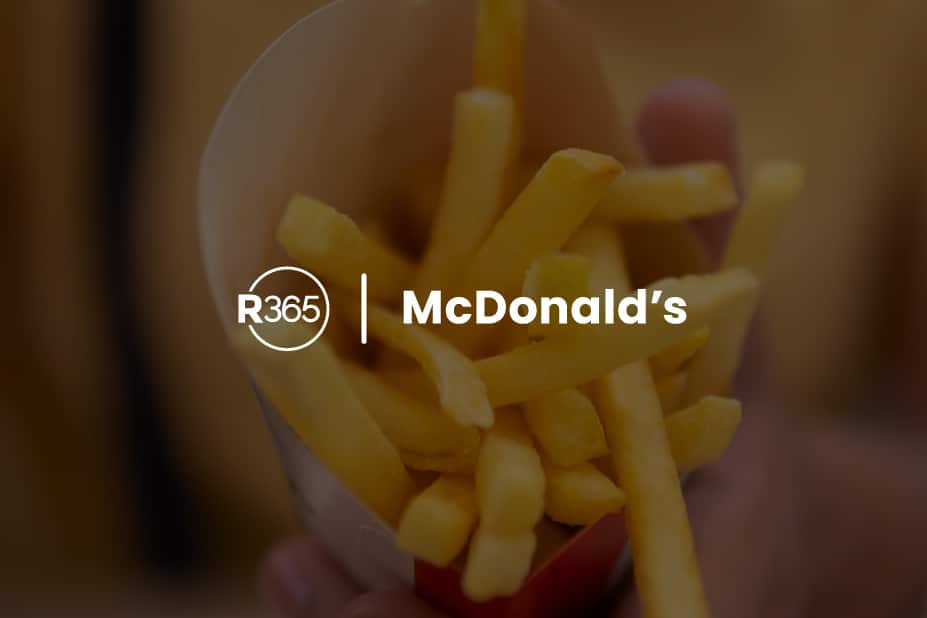With food costs running at approximately 30% or higher, learning importance of inventory management and how to prevent common mistakes is critical in successfully driving down costs and maximizing profits.
Inefficient restaurant inventory management practices, improper storage, gaps in inventory logs, theft, and waste are among the top reasons that cause even the most successful kitchens to fail. Fortunately, all of these can be prevented by knowing and avoiding top mistakes and implementing best practices around each of them.
First, let’s break down the two types of inventory costing, Actual and Theoretical.
Theoretical Variance
- Actual Food Cost (COGS)
- A straightforward calculation
- Beginning Inventory + Purchases – Ending Inventory = Actual Cost of Goods Sold (COGS)
- Theoretical Food Cost
- A perfect-world snapshot
- Beginning Inventory + – – Theoretical Usage (Sales Mix) = Theoretical Ending Inventory
- Your Theoretical Variance is the difference between what you actually have vs. what you should.
Correcting common inventory mistakes is the first step needed to tighten inventory variances and increase your bottom line.
Below are the Top 5 Inventory Mistakes and how to correct them:
Mistake #1. Inaccurate, Infrequent Counts
To be able to correct a problem, you need to know when and how it happened by conducting more frequent counts.
SOLUTIONS:
- Conduct weekly inventories in addition to monthly valuations. Counting weekly paints an accurate picture of how you are using your product and enables you to take action to correct problems.
- Count your prepped items to improve your theoretical variance. Since your prepped items are technically still product that is sitting on your shelves, not counting that means that your theoretical variance will increase since there is no record of where those raw ingredients went.
- Organize your storage locations for expedited counts. Organize like products together. Instead of walking from one side of the storage room to the other as you move down your list, the items will be in order, speeding up the counting process immensely.
- Use your counts to create accurate par levels. By using par levels based on your real usage and not just a ‘guess’, you’re much more likely to order the correct amount of product.
- Schedule your counts consistently. Always count on the same day of the week, same time, and before/after service. Keeping that cadence will allow you to spot any inventory anomalies much quicker – something like, we’ve never run out of shrimp on a Monday before, what happened this week? If you count sporadically, you’ll be less likely to notice when something unusual happens.
Mistake #2. Failing to Streamline the Ordering Process
When it comes to ordering, organization is key to saving time and money.
SOLUTIONS:
- Whether using excel for inventory management, printed F&B inventory sheet, or a food and beverage inventory software, be sure the restaurant kitchen inventory list is broken down by restaurant inventory categories such as storage location, list all items in order (shelf to sheet), and includes pars.
- Order on time. Rushing through an order does not allow efficient time to count on-hand inventory accurately, which will lead to ordering mistakes.
- Use a budget system to ensure you are proactively managing your spending. It’s easy to over buy if you are not using a budgeting system.
- Reduce the number of deliveries. Every time a truck pulls up to your back dock, it costs you money. Consolidating vendors and the number of deliveries made each week will save you money.
- Manage inventory levels. Inventory is expensive. Having too much inventory on hand ties up cash, encourages theft, results in spoilage, and leads to overuse. Try to keep an average of only 7 days of inventory value on hand
Mistake #3. Improper Receiving Procedures
Improper receiving influences all other aspects of your food inventory management system, from future counts being slower since you didn’t organize correctly, product being spoiled, or being shorted product that you paid for and needed.
SOLUTIONS:
- Hire competent personnel to receive orders. Carefully train them on quality control, paperwork, specs, and storage. Employees that you designate as receivers should be able to not only recognize various quality levels of merchandise, but also be trained on how to handle the necessary paperwork and any digital recordkeeping. Most importantly, you need your receiver to know what to do when something out of the ordinary arises.
- Make sure you have the proper equipment needed to check in your goods. An accurate and appropriately sized scale, temp probes, calculators, rule measures, dollies, bar code readers, etc.
- Schedule your deliveries carefully by designating appropriate receiving hours with your vendors. Make sure that you always have a trained receiver on hand during these hours.
- Have the receivers reconcile the invoices with the purchase orders. Have a printed list of the order readily available to ensure what was expected was actually received.
Mistake #4. Poorly Maintained Storage
Properly maintained storage really is the backbone of your food inventory management system because it prevents the loss of merchandise, particularly through spoilage. Follow the four steps below to avoid throwing product – and your money – literally in the garbage.
SOLUTIONS:
- Rigid sanitation standards need to be maintained to decrease spoilage. Appropriately zone storage so that like items are together. Maintain physical cleanliness of storage areas.
- Use the first in, first out system (FIFO). FIFO simply means newer stuff at the back, older stuff in the front to ensure that the older stuff doesn’t go bad before you get a chance to use it. Train your receiver to rotate your merchandise as it is received.
- Keep a Waste Log to reduce your theoretical variance. The act of logging waste reduces waste. Plus, it creates an actionable data point to begin narrowing down the rest of your variance.
- Always date and label everything. EVERYTHING.
Mistake #5. Sloppy or Nonexistent Issuing System (Theft/Pilferage)
Theft is rampant in small businesses. 75% of employees admitted to stealing from their employers at least once. With intense competition and shrinking profit margins, it’s prudent to take a closer look at the procedures currently in place when issuing some of your most vulnerable (and valuable) inventory items.
SOLUTIONS:
- Implement a ‘buddy system’ for counts; one person calls, the other person marks. This creates an accountability under the assumption that it’s less likely for two people to conspire to steal together than for one person to secretly snag things.
- Make sure there is adequate supervision in the production and service areas. Leaving hourly employees alone for extended periods with thousands of dollars’ worth of product and an easy back door exit to their car creates temptation.
- If possible, restrict access to storage areas and receiving facilities to only authorized personnel to reduce opportunities for pilferage.
- Use your weekly order counts to narrow down which items may require a product requisition system. These will be your items with the highest variances. Create a product requisition system for these items. This could be as simple as a log sheet where it is noted every time this product is used, creating accountability and alerting employees that it will be noticed when items go missing.
CONSISTENCY is key when it comes to restaurant inventory management. There are many tools to help you create a successful food inventory management system, but it does not completely substitute the human touch. Train your staff on these systems and be consistent. The system is the action, not the setup.
Conclusion
Inventory may involve a lot of moving pieces, but with these tips in mind, you can improve every area of your restaurant inventory management.
If you would like to easily track data and gain insight into your operations to increase efficiency and boost profits, consider a comprehensive, kitchen inventory management software solution. Restaurant365 incorporates restaurant accounting software and restaurant operations software into an all-in-one, cloud-based platform. It includes tools for financial reporting, operational reporting, inventory control, scheduling, and more.



